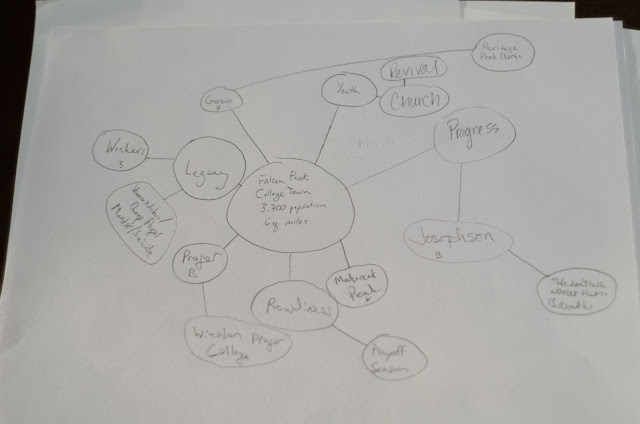An August tradition, I suppose, is to respond to the prompts for RPGaDAY, and the 2018 prompts have a lot going on. I figured something I could do today is use one of them as a prompt for a blog post, because it's something I've been thinking about, too.
Today's prompt is How can players make a world seem real?
 |
| Character sheets from a game of Turn I'm currently playing. |
I think this can be a bit of a personal thing, but one way to do it for me is to give everything reasoning and give everything a story. NPCs, events in game, etc. all should have some flavor to their existence. It ties directly into collaborative worldbuildimg. This has been really growing for me while working on Turn, a game where everyone has loads of narrative control, and while playing D&D with my partner Dillon.
I'll talk about Dillon first, because it's super exciting to me. I'm not naturally a huge D&D fan - honestly, it's a big game and a lot of the fiction bums me out. But, in the game I'm playing with Dillon, we've been rewriting a lot of it. The mechanics mostly remain the same, tho were using house rules and I'm playing cosmic horror investigation type fiction instead of the average adventure. But the fiction!
 |
| Credit: John W. Sheldon CC-BY 4.0. |
For example, we were building up my character's family and Kelt, my PC, is half tiefling, half half-orc, and I was talking about Kelt's dad being a cleric. I said how it felt to me, due to some of the other background stuff we've done for the game, that tieflings aren't demonic, they're more druidic, nature based.
 |
| You know, more mountain goat than Black Phillip. Photo by Brie Sheldon. |
Dillon and I discussed it, and he liked the idea, so we changed the way teiflings work in the game to have them even physically be more based in nature with antlers and ram horns rather than demonic horns, and it suited their culture that we'd developed, too. Now I have more knowledge about my PC's dad's history, the world around him, and I have a personal touchstone because I got to be a part of it!
And it reflects in that "everything has a reasoning, everything has a story" too - my character takes public transportation as we're set in a near-industrial world, so Dillon had a newspaper I could read and gossip I could listen in on, but also he does something that's important: when I suggest a frivolous detail for the scene, NPCs, etc., he considers it and often accepts it!
Like if I were to pass by someone and they rudely bump into me and I say,
"I bet they're rushing off to a meeting with their mistress!"
Dillon runs with it, something like "actually, it's his boyfriend and it's their anniversary!"
I may never encounter that NPC again, but it feels real.
 |
| Credit: John W. Sheldon CC-BY 4.0. |
So as a player, I engage back with these things, bring them up, ask questions, offer input. Making the world mine is part of the experience!
And this is all relevant to Turn. In Turn, I've tried to design some of this in. The worldbuilding you do with the town creation gives players deep engagement to the roots of the town and all its trappings, letting you understand the relationships and founding and themes before you start play, and you can add to it.
 |
| A town map from Turn. |
As a player in Turn, I've been lucky enough to have all of these experiences. John is often my GM in games and in Turn he does a spectacular job executing these ideals I have for a "real" world. He is the source for my researching the Storyteller section of Turn, and will be consulting heavily on it.
I'm so lucky to have two partners who are such amazing GMs and who let me make the world real from the role of a player!
Hope you enjoyed the post today and that you find it useful!
Thoughty is supported by the community on patreon.com/briecs. Tell your friends!
To leave some cash in the tip jar, go to http://paypal.me/thoughty.
If you'd like to be interviewed for Thoughty, or have a project featured, follow the instructions on the Contact page.


No comments:
Post a Comment